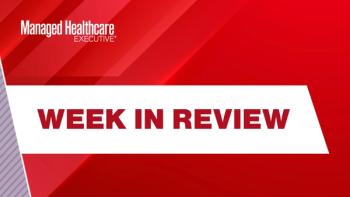
Three Surprising Things Health Execs Should Know About Health Literacy
If all consumers had a high understanding of how to navigate the healthcare system, health insurers could save billions of dollars a year. Here’s what you should do.
The complexity of healthcare is costing payers-big, according to a new report.
An Accenture
Health insurers and employers spend about $26 more on administration fees for every consumer with low healthcare system literacy-and this translates to $4.82 billion annually in administrative costs, compared with $1.4 billion for those with high system literacy, according to the report.
The Accenture healthcare system literacy index evaluates the degree that consumers can obtain, understand, and navigate information and services to make health decisions. Using the healthcare system literacy index, Accenture evaluated how literacy levels affect the performance of nine consumer experience touchpoints and then calculated the correlating impact to administrative costs.
“As the healthcare system grows more complicated, consumers’ understanding of the system is not keeping pace,” says Jean-Pierre Stephan, managing director of health engagement at Accenture. “Our report brings attention to the costly consequences of a complex healthcare system. Not only are consumers frustrated-but money is being wasted. While there is no quick fix to eliminating systemic complexity, our research points to a few strategies payers can take into mind to create a new model of consumer service and engagement that makes the healthcare system feel simpler and easier to navigate-especially in an age where digital retailers already offer one-click shopping.”
High expectations?
According to Stephan, consumers are expected to understand and navigate the complex layers of a healthcare system that was not designed with them in mind. “The healthcare system is so complex that roughly half of consumers don’t understand how to navigate it on their own,” says Stephan. “These consumers struggle to make informed decisions about everything from the health plan types they choose and the premiums they pay, to the doctors they see and the procedures they have received.”
Overall, just one in six consumers are considered to be experts in navigating the system, while one third have no experience or proficiency with it whatsoever, according to the report.
Confusion translates into a significant customer service cost burden for insurers and other healthcare companies, according to Stephan.
Compared with consumers who have a high level of literacy with the healthcare system, consumers with a low level of system proficiency are 13% more likely to contact a customer service representative, according to the report. They are three times more likely to use customer service one to three times a month and seven times more likely to use customer service one to three times a week.
“Education alone won’t solve this systemic problem, because it isn’t that Americans are failing in healthcare literacy-rather, it’s the complexity of the system that’s failing them,” Stephan says.
Related:
According to the findings, healthcare system literacy isn’t about education level at all. Roughly half of those who have low literacy are college-educated, and nearly all have at least a high school diploma.
Make it simple
Stephan sees see several ways in which the industry can work to simplify the healthcare process:
- Shifting the burden off consumers when they need it most;
- Harnessing AI to help deliver easy-to-follow programs and relevant products with individual customization;
- Incentivizing healthcare providers to help consumers understand and navigate their health insurance options and questions;
- Working with employers to encourage them to provide more health insurance education through employee assistance programs; and
- Engaging community members to provide empathy and direction when consumers feel lost in the healthcare system.
More surprises
Based on the report, there are three things healthcare executives should know about health literacy:
1. Healthcare system literacy is not about education level. In fact, around half (48%) of low healthcare system literacy consumers completed college or hold a graduate degree. And, nearly all (97%) of them have at least a high school diploma.
2. Even beyond medical outcomes, there’s substantial administrative cost associated with those who don’t know how to navigate the healthcare system on their own. “These consumers cannot correctly identify terms related to their health insurance coverage, including premium, deductible, copayment, coinsurance, and out-of-pocket maximum,” Stephan says. “Also, they don’t understand the difference between in-network and out-of-network and are unaware of the benefit differences in their plan between the two.”
If all consumers had a high understanding of how to navigate the healthcare system, health insurers could save $3.41 billion a year in administrative costs.
The complexity of the healthcare system is especially detrimental to those with a low understanding and the highest healthcare need, facing sizeable medical costs and serious conditions such as cancer, congestive heart failure or renal failure, which require additional interactions with customer service, according to Stephan.
“Difficulty in making informed decisions impacts consumers’ ability to get the medical care they need, creating higher administrative and medical costs for insurers and employers, while increasing the risk that those consumers will incur unnecessary out-of-pocket expenses,” he says.
3. Ultimately, the only way to eliminate this systemic issue is advancement. “Rather than forcing consumers to battle the complexities of the system, the healthcare system must design user experiences to align seamlessly with the needs, behaviors and preferences of the people it serves,” Stephan says.
Newsletter
Get the latest industry news, event updates, and more from Managed healthcare Executive.





















































